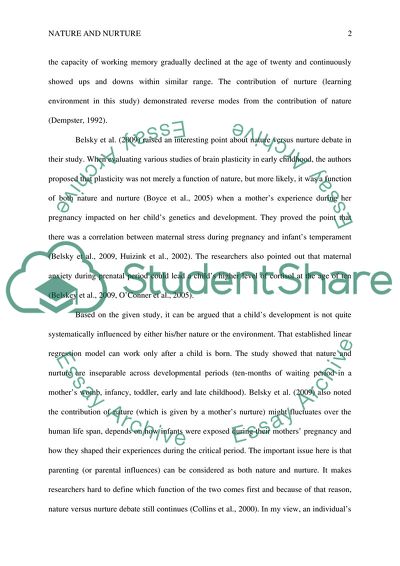How Nature and Nurture Contribute to Development Assignment Example | Topics and Well Written Essays - 1500 words. https://studentshare.org/psychology/1741408-developmental-psychology
How Nature and Nurture Contribute to Development Assignment Example | Topics and Well Written Essays - 1500 Words. https://studentshare.org/psychology/1741408-developmental-psychology.


